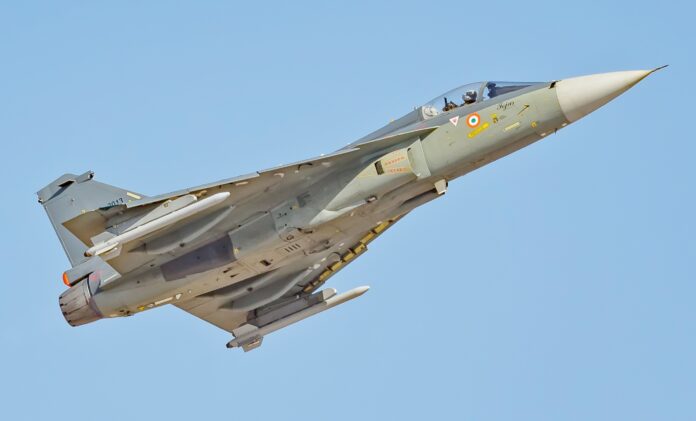In 1975 India launched its first satellite Aryabhata, named after one of the greatest mathematicians and astronomers from the classical age. However, the rocket that took our first satellite into space was Russian, and it was launched from the Kapustin Yar, the erstwhile Soviet Union rocket launch and development site in Astrakhan Oblast, using a Kosmos-3M launch vehicle.The satellite was ours but we were dependent on others to place it in space. And just five years later in 1980, India was able to launch its own satellite from its indigenously developed Satellite Launch Vehicle (SLV-3), developed by scientists at ISRO which successfully placed satellite Rohini in the orbit.
By Balaji Subramanian
“If you give a man a fish, you feed him for a day. If you teach a man to fish, you feed him for a lifetime.”
Since our first rocket launch, we as a nation have gone from strength to strength in space exploration and are on the cusp of sending our own manned mission to space, probably by 2022.The dream of Vikram Sarabhai for India to be self-reliant and independent in rocket manufacturing and to forgo dependence on foreign governments has been realised. We now have ballistic missiles capable of destroying targets thousands of kilometres away and perhaps the most significant achievement is the development of Anti-Satellite (ASAT) capability.Only the US, Russia and China have this capability, and this puts us in a very special league alongside giving us high deterrence capacity. However, four decades since the development of our own launch vehicle when it comes to developing state of the art indigenous conventional defence platforms, we are still dependent on foreign governments and the road to indigenisation is not going to be an easy path.
Most of our indigenous weapons are manufactured by state-owned companies, like the Hindustan Aeronautical Limited (HAL), which has just bagged a whopping 48 thousand crores contact to built 83 Tejas MK1A. Other state-owned entity is the Defence and Research Development Organisation (DRDO) which has a history of delivering weapons years after it had received its commissioning. Then there is the Ordnance Factory Board (OFB), a relic of British colonialism which has become an economic and a security liability for India. Over the years when OFB did deliver weapons after a long delay, the prospect of our soldiers getting killed by the enemy was far lesser than getting killed by faulty ammunition.
As per an audit done on the OFB between 2014 and 2019, there were 403 accidents resulting in 27 fatalities. The army concluded that this was due to the lack of accountability and poor quality of production by OFB facilities.In an article published in The Print, the Army said, “quality of output, procedures in the factories and inefficient post-sale service” has led to many serious challenges when it comes to operational readiness in air defence, armoured corps, infantry and artillery arms of the Army, for which the OFB manufactures ammunition.The Army noted that many countries refuse to accept ammunition and other equipment manufactured by India’s ordnance factories.
A Comptroller Audit General (CAG) report says the OFBs have missed annual production targets by 51-67 per cent between 2013-14 and 2017-18 and resulted in Rs 960 crore loss to the exchequer due to poor quality. The Army went as far as to suggest to the government to corporatize the OFBS. Although, in all honesty, it is a bridge even the Modi government may not cross.However, the question remains – how long will the government stave off the inevitable?
That is why it is important for India to go for indigenisation along with the development of domestic capacity and capability when it comes to complex weapons platforms. The order given to HAL for 83 Tejas MK1A is the step in the right direction, even as it has several detractors. There is still a lot of aspersions and apprehensions on HAL and it is valid on the part of Indian Air Force (IAF) to have them with regards to on-time delivery, quality, spares and inventory management. Conventional wisdom says no more than 25 per cent of fighters should be at any point of time be up for maintenance or upgradation. Any more, and that puts a lot of pressure on operational readiness and in the case of India, suffering from the curse of geography due to our (not so friendly) neighbours, our air force and the army has to look at the possibility of a two-front war, albeit local, yet very intense.
During the recent standoff against China, the government went on a spending spree under the emergency provision to buy weapons and other equipment to maintain operational readiness.What if this money had been spent on buying weapons from Indian companies? Another aspect to consider is the different needs and challenges faced by the three services in the country.Among the three services, the Indian Navy has gained a lot from indigenisation of defence equipment. But the problems faced by the IAF is much more complex and their scepticism about HAL delivering a quality fighter that is overall consistent, reliable, resilient is justified based on past experiences.For the army, it is more to do with guns and ammunition for the infantry and the artillery.
The indigenous ATAGS, a 155mm, 52 calibre artillery gun jointly developed by the DRDO in partnership with Bharat Forge of the Kalyani Group and the Tata Power SED, looks very promising and a calls for a synergy between the private sector and state-owned defence corporation. For the air force, the real problem is the miniaturisation of technology and what it means is to put cutting edge technology in very small places. The Navy does not suffer from such problems because a ship is quite large and in comparison, a fighter plane is smaller and must carry complex weapons and electronic warfare systems without hindering its flight capability.The West has the upper hand when it comes to the experience in conceiving and developing a fighter jet. They also go through years of testing but once the fighter is operational new features are added with ease.
The IAF for years has suffered from systems integration problems with its fighters, particularly with its Russian fighters. Firstly, no country would want its technology fall into the hands of a rival and even if they agree, the systems integration is a pain that often leads to several fighters grounded for an extended period of time.Union Defence Minister, Rajnath Singh, was right when he said “India cannot be dependent on others for its defence” and what he meant was there are no permanent friends or permanent enemy when it comes to matters of the state and in the matters of foreign policy, one must always be careful not to depend on one or more nations to fulfil our defence needs.
There could be policy shift by a new government and India could find itself facing the short end of the stick and this has happened before. Foreign policy is nothing but a means to an end and right now the top defence contractors are salivating at the prospect of getting a very large defence deal worth almost 20 billion dollars.This deal is not only critical for our defence it is also very much political decision. Money buys marginal friendship in international diplomacy as long as it keeps flowing.
In the future, what if India is facing an economic crisis? Just because China disengaged from Ladakh does not mean it will not try to lean on us in the future. What happens if China really puts the screws on us and we don’t have the money to buy weapons on emergency basis? In order to fulfil our needs what we are willing to concede? This has happened before with India when the United States agreed to sell us cryogenic engine rockets but it came with a rider. For decades, India’s nuclear, rocket propulsion technology and ballistic missile programs were under the weight of sanctions but we persevered because we were under threat and that was motivation enough and we are Atmanirbhar in this field.
That is why the time has come to do the same with our conventional defence platforms and go Atmanirbhar. In 2019, Defence Minister Nirmala Sitharaman talked about the importance of “nose-to-tail production” that could be achieved by building a robust supply chain. The time has come for private players to get proper government funding but with clear oversight. Modi wants to promote startups, and now is the time to give them the opportunity to play an important role in defence modernisation by leveraging their desire to make innovative technologies.
In the Parliament, Modi said the time has come for our youth to shine. Many of these startups have young people who want to be the next Jack Northrop or Kelly Johnson, who helped develop the SR-71 blackbird, a plane that still does not have a rival. A fighter plane is an offensive weapon and superior fighter jet is a force multiplier capable of inflicting more damage than a battery of heavy artillery. The path to indigenisation is not going to be easy but India must go full throttle on developing indigenous weapons platform and must invest in research and development. There are several programs there already that look promising.
Let’s face the fact that no one is going to teach us how to fish because it is bad for business. It will take us a long time and we will probably endure some failures, but every step will be a major milestone towards an Atmanirbhar Bharat. It is ironic that rocket science is considered a very difficult field but as it turns out, developing a fighter jet appears much more challenging than sending Indians into space.
Article Courtesy: www.heartlandanalyst.com












